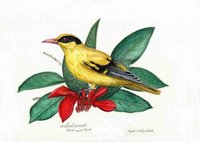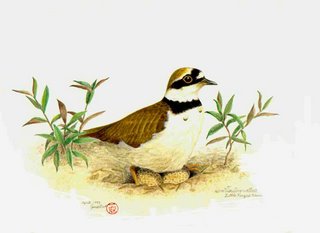A BIRDWATCHER’S DIARY  Little Heron – by Yurie Ball
Little Heron – by Yurie Ball The rainy season is coming to an end, or so they tell me, and this month, September, is known to be the wettest month of the year here in the north. Well I can tell you that it is living up to its reputation. The Huay Tung Tao lake is overflowing its banks and trees that are usually on the edge of the lake are up to their knees in water. The sluice is flowing over and the water level in the lake is still rising. All this precipitation hasn’t stopped me going out, it has just made it a little more uncomfortable. I have my poncho but pity those poor birds, they only have the same lightweight feathers that they have all year round and so they just sit in the trees all huddled up and looking thoroughly bedraggled and miserable. There are exceptions to this and they are the wagtails, they always look alert and their name-giving tails are always on the move as are the birds themselves.
The Thai military at Huay Tung Tao keep on cropping up and this time they were on their shooting range and letting go with everything they’d got. From the sound of it they were only a few hundred metres away and it was quite deafening. But what was more interesting was the result it had on the birds. I happened to be watching a Shikra circling overhead looking for breakfast at the time and it took off like a scalded cat jinking and generally performing some really interesting aerobatics. Obviously this bird was dodging bullets that it must have thought were on there way. All its movements were choreographed to coincide with each fresh burst of gunfire coming one on top of the other. The more amazing result was the number of other birds that fled the paddyfields at this outburst. I always knew that there were quite a few pond-herons concealing themselves in the growing rice but I counted at least 100 as they beat a hasty retreat, scores of lapwings, mynahs and a lesser number of snipe, it was quite revealing the number of birds that were hidden in those fields.
Interaction between species: The following incidents are actually not as serious as the heading would indicate maybe they were even a little humorous. The most recent instance of this interaction happened today (Oct 5th) between two Kingfishers, the White-throated (28cm) and the Black-capped (30cm). The latter bird was sitting on a branch minding its own business when the white-throated version dived out of nowhere to the attack. I was watching the Black-capped through my binoculars at the time and there was a sudden blue blur and it fell off the branch, recovered and flew away. More or less the same thing happened about one kilometre away – whether they were the same birds I can’t be sure. The reason for this attack was that the Black-capped was poaching on the other bird’s territory. This victim of the uprovoked attack is in fact a passage migrant up here in the north and even though a bigger bird retreated as it was out of its territory.
The second incident took place a couple of days ago and it was between a Little Heron (46cm) and a male Shikra a small accipiter (hawk) approximately 30cm. in size. When I came upon them they were already almost head to head in a tree and the heron was obviously upset as its black crest was standing up, all spiky, and threatening the smaller bird with its dagger-like beak. The Shikra seemed to be teasing it, moving around it from branch to branch, the heron finally decided it had had enough and flew off and I carried on walking only to come across it a few hundred metres farther on. It was in a dead tree and was in even worse trouble. It had certainly picked the wrong place this time as it was on the ‘turf’ of a gang of Ashy Wood-Swallows. This tree was the hang-out for at least 20 of these birds and they were giving the heron a really hard time, dive bombing it from all directions. The heron was crouched down and was stabbing upwards with its beak, a useful weapon when used against slower moving birds, but in this instance hitting nothing but air as the wood-swallows flashed by. Again it ignominiously fled the battlefield.
Who said birds don’t have a sense of humour ? probably nobody but here’s evidence that they do. Again this one involves a Shikra and the other partner in the comedy was a White-crested Laughingthrush (the same size as a Shikra). I was watching a flock of them when the Shikra alighted on a branch a few feet away, it then made a half-hearted charge at one of the flock and it developed into a game of hunter and hunted each taking their turn in being chaser and the chased. You could see the mock indignation as the farcical chase went up, down and along the branches until both parties tired of the game and the Laughingthrush rejoined the flock that had moved on and the Shikra flew off in the opposite direction.
Finally quite an exciting little episode, a female Eastern Marsh-Harrier (56cm.) was spotted quartering the paddyfields looking for prey at the top end of the Huay Tung Tao lake. Panic-stricken birds were fleeing the scene as the harrier wafted its way back and forth acoss the fields, two to three metres above the ground. I didn’t realise how many snipe were actually feeding in these rice fields but pair after pair, close to twenty in all, would explode out of them as the harrier approached. Other birds had the temerity to attack it, these included White Wagtails, Stonechats and Barn Swallows, but it was incredible how quickly the tables were turned. The harrier would make an amazingly acrobatic turn and very soon the attackers became the attacked. I watched this scene for about twenty minutes until the harrier departed after an unsuccessful hunt. This sudden tide of activity then receded in the somnolent heat of the morning.
Returning Migrants: Black-capped Kingfisher (Sept. 7th), Brown Shrike (Sept. 7th), White Wagtail (Sept. 20th), Two-barred Warbler (Sept. 20th), Eurasian Kestrel (Sept. 22nd), Red-throated Flycatcher (Sept 22nd), Asian Brown Flycatcher (Sept. 22nd), Forest Wagtail (Sept 23rd), Eurasian Wryneck (Sept. 24th). Siberian Rubythroat (Oct. 5th). Eastern Marsh-Harrier (Oct. 10th).










